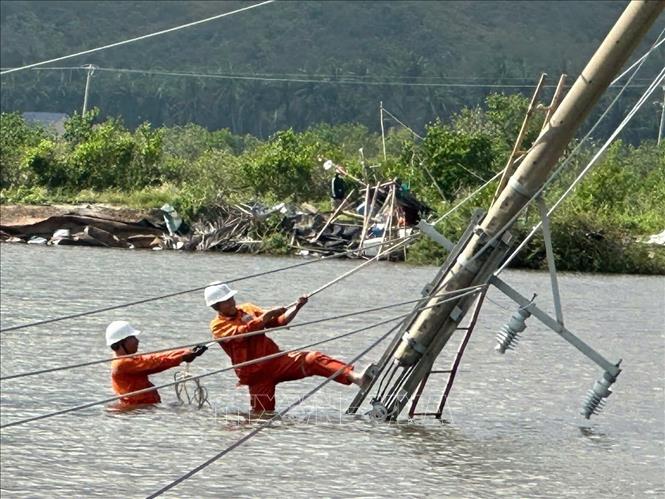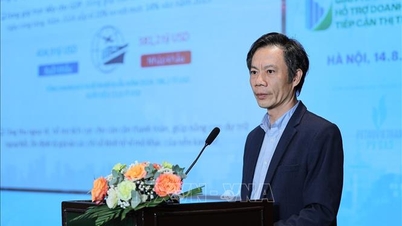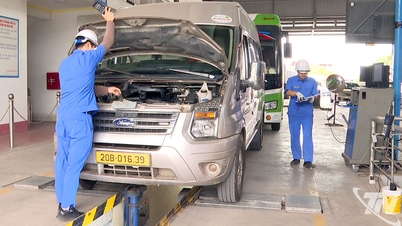
Regarding load, electricity consumption demand remains low but peaks appear around 5:45 p.m. - 6:00 p.m. every day, the difference between the low night peak and the evening peak in the North is up to 10,000 - 11,500 MW, with an increase/decrease of 2,500 - 2,800 MW in just 30 - 40 minutes.
The hydrological situation is also facing many difficulties. At present, most hydroelectric reservoirs in the North, South and some in the Central region have entered the water storage phase. However, due to consecutive storms since the beginning of October, the number of reservoirs releasing water remains high, especially in early November 2025, 82-91/122 reservoirs had to release water with a total capacity of 15,940-17,040 MW; of which, large reservoirs in the North such as Son La, Hoa Binh , Lai Chau had to reopen their discharge gates (approximately 5,760 MW).
Renewable energy sources also fluctuated strongly; in which, wind power capacity reached 3,400-4,000 MW when the storm hit the mainland, 3-4 times higher than before. The mobilization of coal-fired thermal power plants was maintained to meet the maximum peak capacity at 6 p.m., ensuring system inertia, voltage regime and safety for transmission lines. At the same time, BOT power plants were also mobilized to ensure physical offtake commitments according to the contract with a total capacity of more than 4,000 MW.
In this context, NSMO has implemented many operational measures to ensure the safety and stability of the power system: stopping the backup of nearly 3,000 MW of coal-fired thermal power plants in the North after storm No. 13 dissipated, stopping/starting many gas turbine units to meet the peak of the dark time, maximizing transmission capacity on connecting lines, and simultaneously adjusting the mobilization of renewable energy sources and hydropower when there is excess capacity. All measures are implemented based on technical calculations, ensuring transparency and fairness among power generation units.
According to NSMO, the surplus situation is caused by the overlapping adverse factors from extreme weather and large storms, which is expected to improve when the storm circulations end, hydrological conditions return to normal, other power sources will be mobilized to safely operate the system and store water in hydropower reservoirs in preparation for the 2026 dry season.
NSMO shares the difficulties of power generation units when having to reduce capacity mobilization, however, this is a mandatory technical requirement to ensure the safety and stability of the national power system; at the same time, it hopes to continue to receive close cooperation from units in operation.
Source: https://baotintuc.vn/kinh-te/van-hanh-he-thong-dien-quoc-gia-gap-nhieu-thach-thuc-20251112200527814.htm





![[Photo] The "scars" of Da Nang's mountains and forests after storms and floods](https://vphoto.vietnam.vn/thumb/1200x675/vietnam/resource/IMAGE/2025/11/13/1762996564834_sl8-jpg.webp)

































![[Photo] Prime Minister Pham Minh Chinh attends a conference to review one year of deploying forces to participate in protecting security and order at the grassroots level.](https://vphoto.vietnam.vn/thumb/1200x675/vietnam/resource/IMAGE/2025/11/12/1762957553775_dsc-2379-jpg.webp)





























































![Dong Nai OCOP transition: [Article 3] Linking tourism with OCOP product consumption](https://vphoto.vietnam.vn/thumb/402x226/vietnam/resource/IMAGE/2025/11/10/1762739199309_1324-2740-7_n-162543_981.jpeg)








Comment (0)